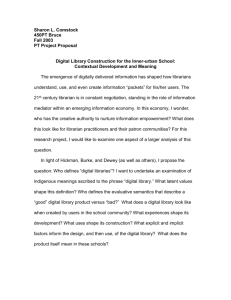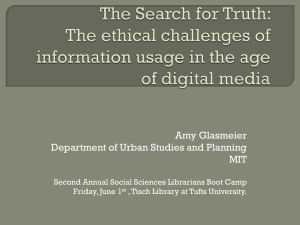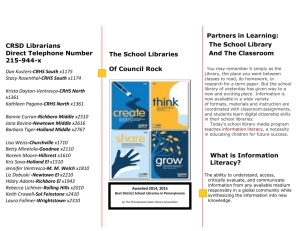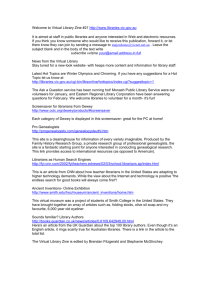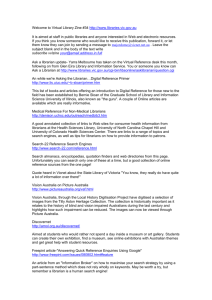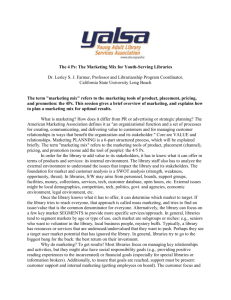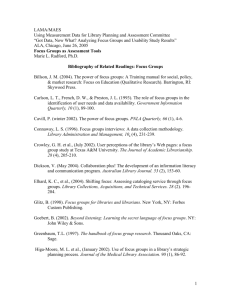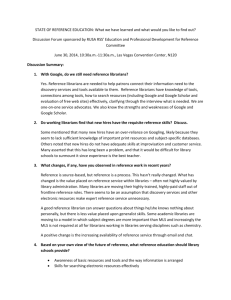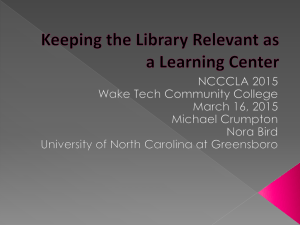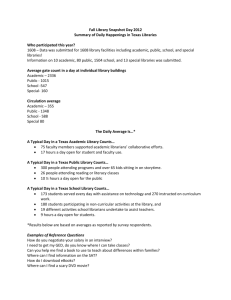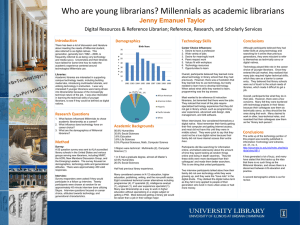The Public Library of 2015
advertisement
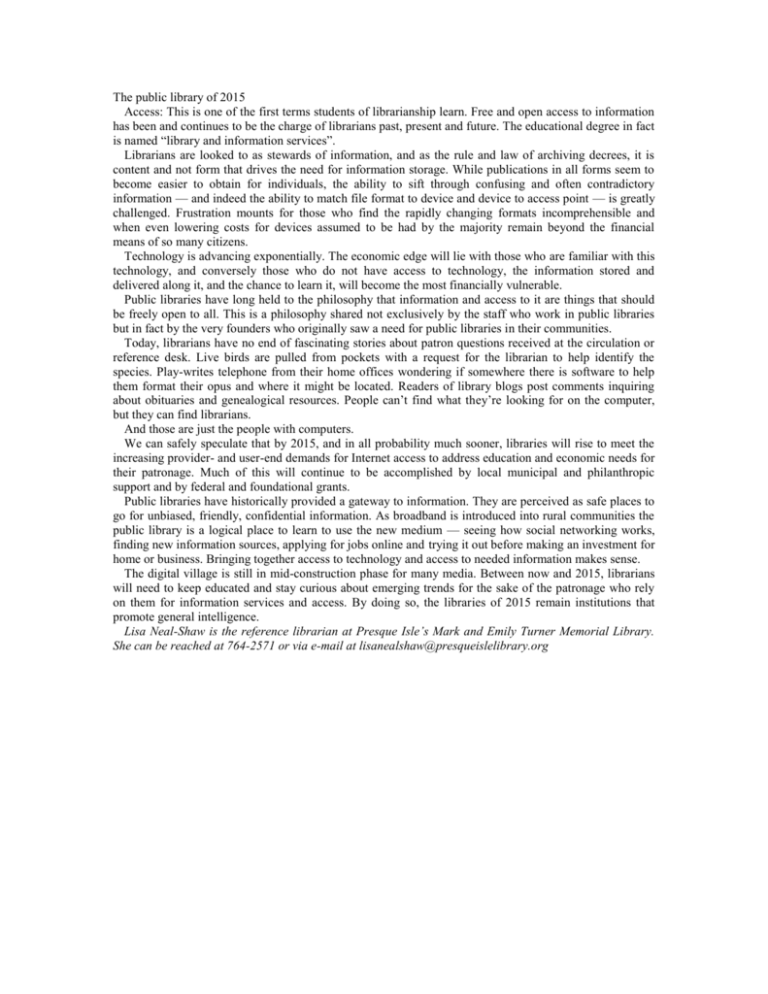
The public library of 2015 Access: This is one of the first terms students of librarianship learn. Free and open access to information has been and continues to be the charge of librarians past, present and future. The educational degree in fact is named “library and information services”. Librarians are looked to as stewards of information, and as the rule and law of archiving decrees, it is content and not form that drives the need for information storage. While publications in all forms seem to become easier to obtain for individuals, the ability to sift through confusing and often contradictory information — and indeed the ability to match file format to device and device to access point — is greatly challenged. Frustration mounts for those who find the rapidly changing formats incomprehensible and when even lowering costs for devices assumed to be had by the majority remain beyond the financial means of so many citizens. Technology is advancing exponentially. The economic edge will lie with those who are familiar with this technology, and conversely those who do not have access to technology, the information stored and delivered along it, and the chance to learn it, will become the most financially vulnerable. Public libraries have long held to the philosophy that information and access to it are things that should be freely open to all. This is a philosophy shared not exclusively by the staff who work in public libraries but in fact by the very founders who originally saw a need for public libraries in their communities. Today, librarians have no end of fascinating stories about patron questions received at the circulation or reference desk. Live birds are pulled from pockets with a request for the librarian to help identify the species. Play-writes telephone from their home offices wondering if somewhere there is software to help them format their opus and where it might be located. Readers of library blogs post comments inquiring about obituaries and genealogical resources. People can’t find what they’re looking for on the computer, but they can find librarians. And those are just the people with computers. We can safely speculate that by 2015, and in all probability much sooner, libraries will rise to meet the increasing provider- and user-end demands for Internet access to address education and economic needs for their patronage. Much of this will continue to be accomplished by local municipal and philanthropic support and by federal and foundational grants. Public libraries have historically provided a gateway to information. They are perceived as safe places to go for unbiased, friendly, confidential information. As broadband is introduced into rural communities the public library is a logical place to learn to use the new medium — seeing how social networking works, finding new information sources, applying for jobs online and trying it out before making an investment for home or business. Bringing together access to technology and access to needed information makes sense. The digital village is still in mid-construction phase for many media. Between now and 2015, librarians will need to keep educated and stay curious about emerging trends for the sake of the patronage who rely on them for information services and access. By doing so, the libraries of 2015 remain institutions that promote general intelligence. Lisa Neal-Shaw is the reference librarian at Presque Isle’s Mark and Emily Turner Memorial Library. She can be reached at 764-2571 or via e-mail at lisanealshaw@presqueislelibrary.org
